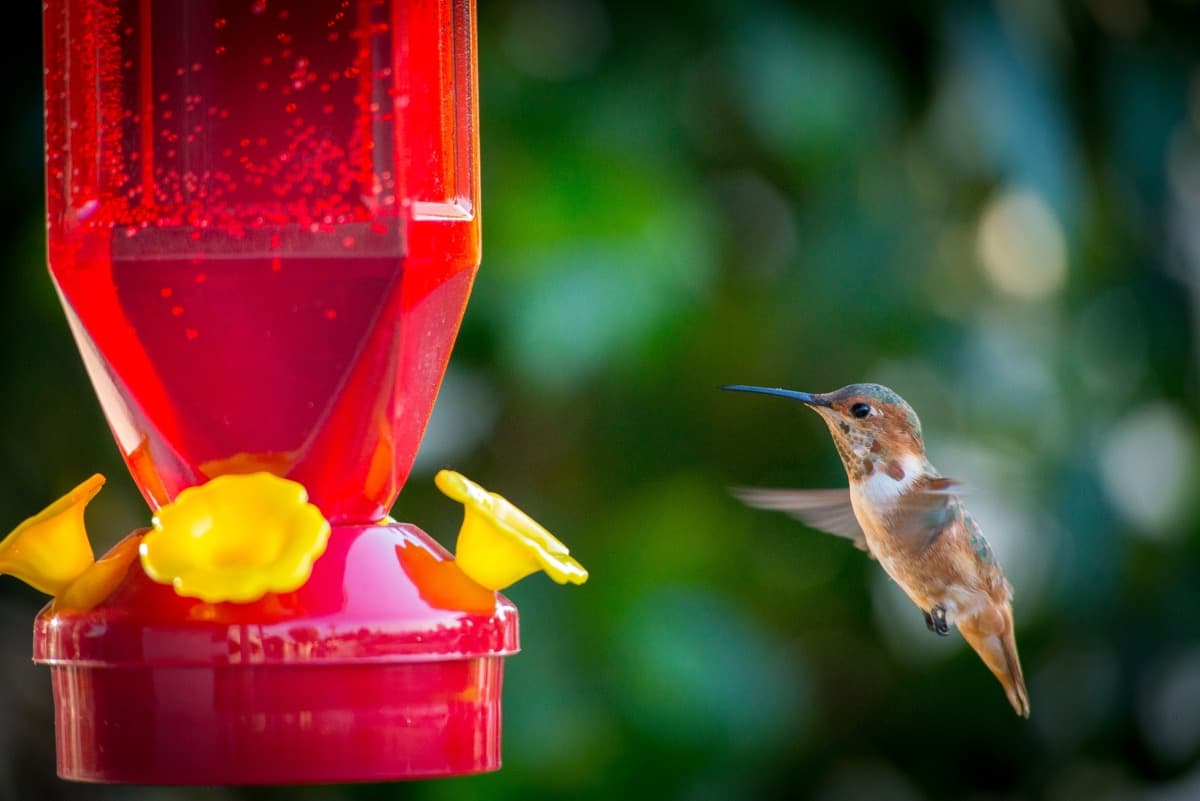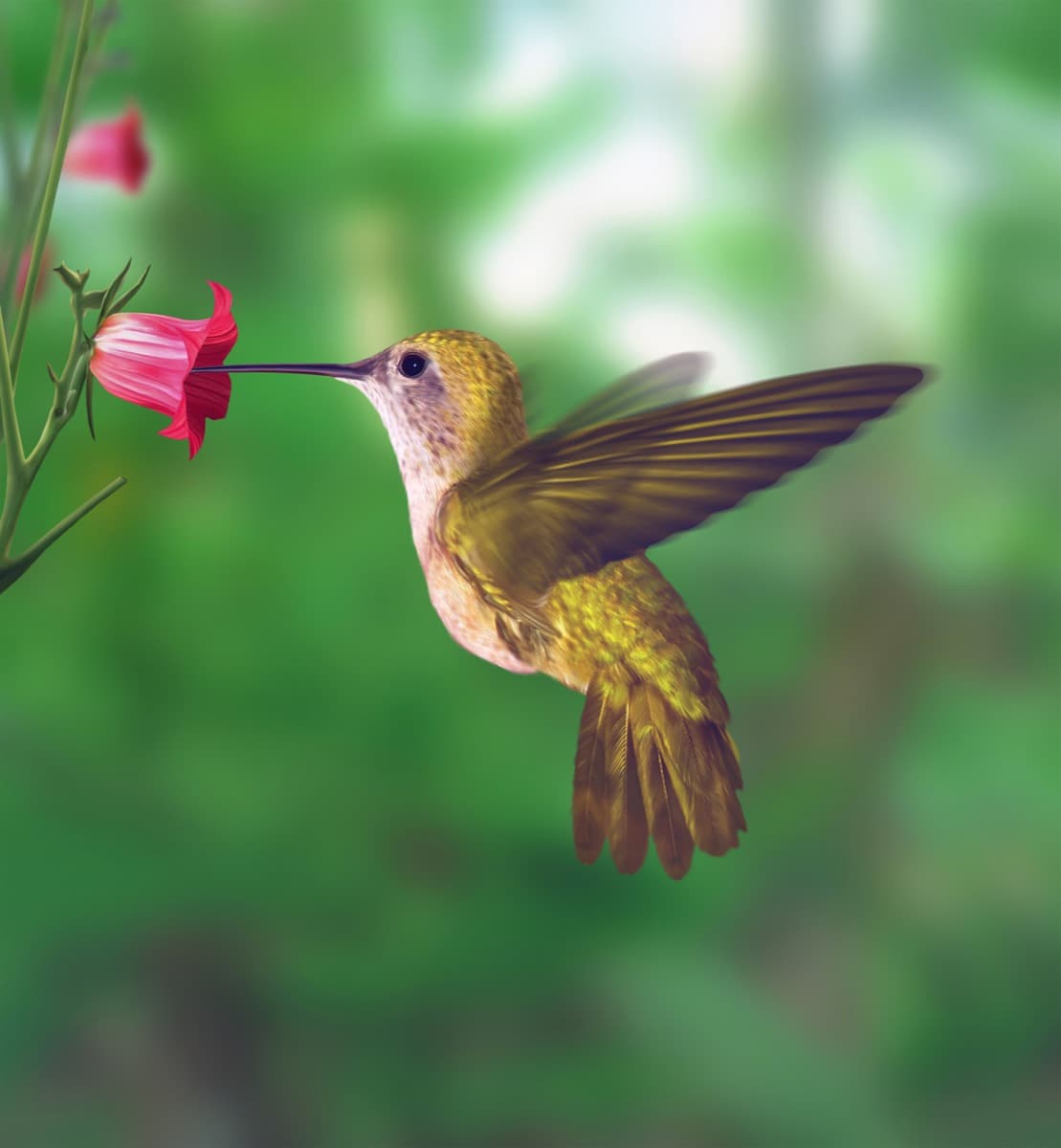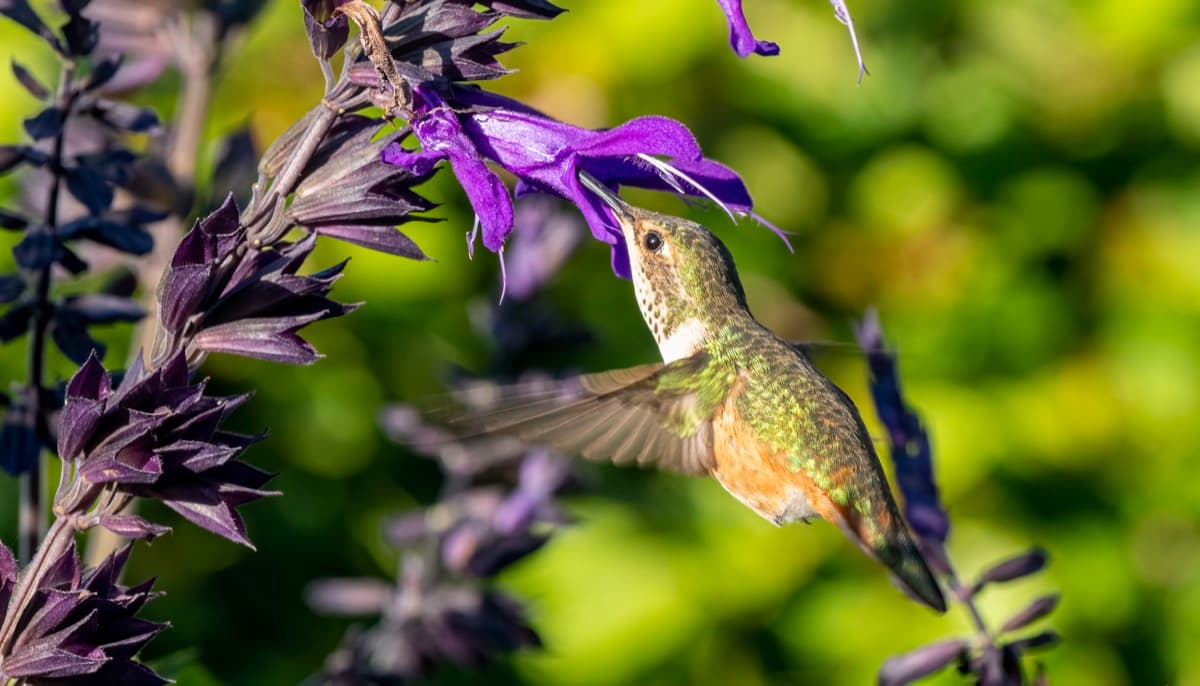Feeding the tiny, fluttering hummingbirds that visit your garden is an enchanting activity that combines a love of nature with the simple joy of watching these little miracles of flight. The need for hummingbird food becomes essential when the blooming season of their preferred natural nectar plants has passed or is yet to come.

In such scenarios, a homemade hummingbird food recipe can be a lifesaver for these energy-intensive creatures. This guide is designed to help you create effective, homemade hummingbird food, primarily focusing on the popular hummingbird food recipe sugar water ratio and understanding how to make sugar water for hummingbirds.
Making Hummingbird Food for Your Garden
Understanding Hummingbirds’ Dietary Preferences
Hummingbirds are known for their insatiable appetite. This is because of their high metabolic rate, an essential part of their incredibly energetic lifestyle. Therefore, it’s unsurprising that hummingbirds’ primary food is high-energy nectar. The nectar from plants is a form of sugar water that the hummingbirds obtain from the flowers using their long, adapted beaks.
Creating homemade hummingbird food effectively involves mimicking this natural sugar water source. Your concoction will mostly contain a simple mixture of sugar and water designed to emulate the natural nectar that hummingbirds usually feed on. While preparing this food, one should remain mindful of the hummingbird food recipe sugar water ratio. It is crucial to get it right to provide the birds with the necessary nutrients without creating potential health risks.
Preparation of Homemade Hummingbird Food: A Step-by-Step Guide
Making hummingbird food at home is effortless if you stick to the correct procedure. In this comprehensive step-by-step guide, we will lead you through the process of creating sugar water specifically designed to meet the essential needs of hummingbirds, ensuring their vitality and well-being. By following these instructions, you will gain valuable insights into the necessary procedures and ingredients required to prepare a nourishing solution that will keep these fascinating creatures vibrant and in optimal health.
Ingredient Collection: The primary ingredients required for this recipe are only plain white table sugar and water. It is critical to avoid using honey, brown sugar, artificial sweeteners, or food dyes, as they can be harmful to hummingbirds.
Creating the Right Mixture: Start by creating the correct sugar-water mixture. The hummingbird food recipe sugar water ratio is typically 1 part sugar to 4 parts water. This ratio is believed to be the closest to the natural nectar that hummingbirds find in the wild. To illustrate with an expanded example, let’s consider the process of preparing 1 cup of food. Begin by combining 1/4 cup of sugar and 1 cup of water.
Boiling the Mixture: Now, you might wonder, “Do I need to boil sugar water for hummingbirds?” The answer is yes. Boiling is a crucial step in the process. This heat treatment helps kill any potential bacteria or mold in the mixture, ensuring the food is safe for the hummingbirds to consume. After adding the sugar to the water, stir until it’s dissolved and bring the mixture to a boil.
Cooling and Storage: After boiling, allow the mixture to cool. It is important to remember never to serve the food to hummingbirds while it is still hot. Once it has cooled to room temperature, you can pour it into your hummingbird feeder. If you have made extra food, it can be stored in the refrigerator for up to one week.
In case you missed it: How to Grow and Care for Bird of Paradise: Planting Instructions

| Steps | Ingredient | Procedure |
| 1 | Table Sugar, Water | Gather the ingredients |
| 2 | – | Mix 1 part sugar with four parts water. |
| 3 | – | Boil the mixture |
| 4 | – | Cool and store the mixture |
Tips for Effective Hummingbird Feeding in Your Garden
The next aspect is knowing how to feed the hummingbirds effectively. First, ensure you place the feeder in a quiet, safe place. Hummingbirds prefer feeders that provide them with a clear view of the surrounding areas to look out for predators. Keep the feeder clean by washing it with hot water every few days, and replace the food mixture regularly to keep it fresh and safe.
If you notice that the food in your feeder is not being consumed quickly, consider making a smaller batch next time to reduce waste and ensure freshness. In addition to the feeder’s location and cleanliness, the feeder’s design can also make a difference. Hummingbirds are naturally drawn to vibrant hues, with a particular affinity for the color red.
Thus, incorporating a feeder adorned in radiant red hues can prove advantageous in luring a greater number of these delightful avian creatures to grace your garden with their presence. Hummingbirds feed on nectar and eat small insects and spiders for protein, which they won’t find in the sugar water. Therefore, while homemade hummingbird food serves as a supplementary food source, it’s important to provide them with a habitat that offers natural food sources.
Monitoring and Adjusting Your Feeding Approach
In your journey to becoming a hummingbird caretaker, observation and adaptability are key. Take the time to observe the feeding patterns of the hummingbirds in your garden. If you notice that the feeder is being emptied too quickly, consider providing more feeders or increasing the amount of food. If the opposite is true and the feeder remains full, you may need to reduce the amount of food or try different feeder placements.
Supporting Hummingbird Health and Habitat
Beyond providing a reliable food source, consider ways to support hummingbirds’ overall health and habitat. This might include planting native flowering species that are naturally attractive to hummingbirds, providing bird baths for them to bathe and drink from, and minimizing the use of pesticides that could harm them or their insect prey. Every step can create a healthier, more welcoming environment for these delightful garden visitors.
Promoting Awareness and Conservation
As a hummingbird enthusiast, you can also significantly promote awareness and conservation for these tiny wonders. Share your knowledge about homemade hummingbird food and proper feeding practices with friends, family, and neighbors. Encourage them to make their gardens hummingbird-friendly. Through such small but impactful steps, you can help create a broader network of supportive habitats for hummingbirds and contribute significantly to their conservation.
In case you missed it: From Egg Layers to Meat Birds: Best Chicken Breeds for Australia

Conclusion
Cultivating a garden that attracts and supports hummingbirds can bring immense joy and a sense of achievement. By preparing homemade hummingbird food, you can ensure these little visitors to your garden have a consistent and nutritious food source. Transform your garden into a hummingbird paradise by using the correct hummingbird food recipe, sugar-water ratio, and feeding methods. Ensure to create a diverse garden with different food sources to supplement their natural diet.
- Feed Your Flock for Less: Top 10 Tips to Save on Chicken Feed
- Ultimate Guide to Ossabaw Island Hog: Breeding, Raising, Diet, and Care
- Hatching Answers: The Top 10 Reasons Your Chickens Aren’t Laying Eggs
- Eggs and Economics: Breaking Down the Cost of Raising Backyard Chickens
- Defend Your Greens: Proven Methods to Keep Iguanas Out of Your Garden
- Ultimate Guide to Cinnamon Queen Chicken: A Comprehensive Guide for Beginners
- Ultimate Guide to California Tan Chicken: Breeding, Raising, Diet, Egg-Production and Care
- Ultimate Guide to Marsh Daisy Chicken: Breeding, Raising, Diet, and Care
- 10 Types of Chicken Farming Businesses You Can Start for Profits